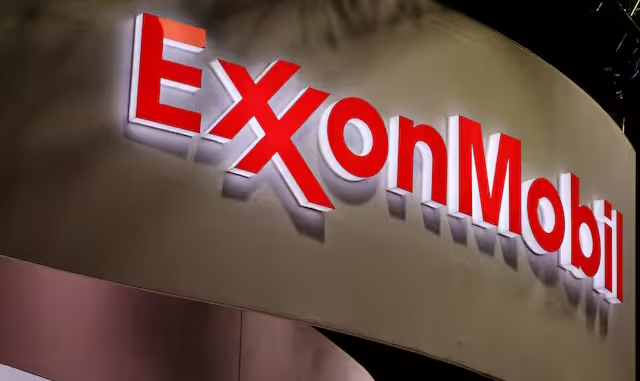
In a significant boost to its energy sector, Trinidad and Tobago has awarded a massive deepwater exploration area to ExxonMobil, marking the oil giant’s return to the twin-island nation after a two-decade hiatus. The deal, equivalent to seven deepwater blocks, could attract up to $21.7 billion in investments if commercially viable reserves are discovered, according to Energy Minister Roodal Moonilal.
This development comes as Trinidad seeks to revitalize its oil and gas industry amid global energy transitions and declining domestic production.
The Deal: A Frontier Exploration Opportunity
The production-sharing contract was signed on Tuesday, granting ExxonMobil 100% interest in the expansive area located northwest of its highly successful Stabroek block offshore Guyana.
Described by Minister Moonilal as “larger than the surface area of the country,” the block represents a frontier exploration zone in ultra-deep waters, with the potential to mirror the transformative discoveries in neighboring Guyana. Exxon’s initial commitment includes a $42 million investment for 3D seismic surveys and up to two exploration wells.
If hydrocarbons are confirmed, the total investment could skyrocket to $21.7 billion, funding full-scale development and production. Exxon plans to kick off seismic work in about six months, followed by drilling the first well, leveraging equipment and resources from its Guyana operations to accelerate the timeline.
John Ardill, Exxon’s Vice President of global exploration, highlighted the project’s promise during the signing ceremony: “While this is still frontier exploration, it has great potential in this ultra deepwater area.” He noted that the deal was negotiated in “record time,” underscoring the mutual enthusiasm between Exxon and Trinidad’s government.
Background and Broader ContextTrinidad and Tobago, long a key player in the Caribbean’s energy landscape, has seen its natural gas production decline in recent years due to maturing fields and reduced exploration activity. The nation hosts major players like BHP, Woodside, BP, and Shell, some of whose deepwater discoveries are progressing toward commercial development.
Exxon’s entry could inject new life into the sector, especially given the company’s track record in Guyana, where an Exxon-led consortium has uncovered over 11 billion barrels of recoverable oil and gas.
Prime Minister Kamla Persad emphasized a proactive stance on energy investments: “Trinidad will not wait for the end of any energy era. Our principle is simple: investment goes where it is welcomed and stays where it is well treated.”
The government has pledged to review fiscal terms to make the country more attractive to investors, potentially including tax incentives or streamlined regulations. One key advantage for Trinidad is its established oil and gas infrastructure, which could enable faster production ramp-up compared to Guyana’s greenfield developments.
This proximity and synergy with Exxon’s Guyana assets position the project for efficient resource sharing and cost savings.
Implications for Trinidad’s Energy Future
If successful, this venture could significantly enhance Trinidad’s energy security, create jobs, and generate substantial revenues through royalties and taxes under the production-sharing agreement. It aligns with global demand for oil and gas amid the energy transition, providing a bridge fuel while renewable alternatives scale up. However, the project’s success hinges on confirming reserves in these challenging deepwater environments, where drilling costs and technical risks are high.What Investors Should Look for in ReturnsFor investors eyeing opportunities in ExxonMobil or broader energy plays tied to this deal, several factors will influence potential returns:Exploration Success and Reserve Estimates: The initial $42 million phase is critical. Watch for updates on seismic results and well outcomes, as positive findings could trigger the full $21.7 billion investment and lead to production within a few years. Drawing from Guyana’s model, where Exxon achieved rapid commercialization, investors should monitor reserve estimates—anything approaching billions of barrels could yield high returns on investment (ROI) through increased stock valuations and dividends.
Oil Price Dynamics: Returns will be heavily tied to global crude prices. With Brent futures hovering around $80-90 per barrel in recent months, sustained high prices would enhance profitability. Investors should track OPEC+ decisions, geopolitical tensions (e.g., in the Middle East), and demand from emerging markets like Asia.
Risk Mitigation and Cost Efficiency: Deepwater projects carry inherent risks, including environmental concerns, regulatory hurdles, and technical failures. Look for Exxon’s ability to apply lessons from Guyana, such as advanced drilling tech and resource sharing, to keep costs below $30-40 per barrel. Favorable fiscal terms from Trinidad’s review could further boost net present value (NPV) and internal rate of return (IRR), potentially exceeding 15-20% for successful fields.
Diversification and ESG Factors: ExxonMobil’s stock (NYSE: XOM) offers exposure not just to this project but to its global portfolio. Investors should assess ESG ratings, as deepwater exploration faces scrutiny over emissions and spills. Strong corporate governance and community engagement in Trinidad could mitigate reputational risks and support long-term returns.
Market Sentiment and Valuation Metrics: Keep an eye on Exxon’s price-to-earnings (P/E) ratio and free cash flow yields. If the Trinidad blocks prove prolific, it could add to Exxon’s reserves replacement ratio, driving share price appreciation. Analysts project potential upside if discoveries align with Guyana’s scale, but volatility in energy markets warrants diversified portfolios.
In summary, this deal positions Trinidad as a rising star in deepwater exploration and offers ExxonMobil a strategic extension of its South American footprint. While risks abound in frontier basins, the potential for multibillion-dollar returns makes it a watchlist item for energy investors.
Stay tuned to Energy News Beat for updates on this evolving story.
In a significant boost to its energy sector, Trinidad and Tobago has awarded a massive deepwater exploration area to ExxonMobil, marking the oil giant’s return to the twin-island nation after a two-decade hiatus. The deal, equivalent to seven deepwater blocks, could attract up to $21.7 billion in investments if commercially viable reserves are discovered, according to Energy Minister Roodal Moonilal.
This development comes as Trinidad seeks to revitalize its oil and gas industry amid global energy transitions and declining domestic production.The Deal: A Frontier Exploration OpportunityThe production-sharing contract was signed on Tuesday, granting ExxonMobil 100% interest in the expansive area located northwest of its highly successful Stabroek block offshore Guyana.
Described by Minister Moonilal as “larger than the surface area of the country,” the block represents a frontier exploration zone in ultra-deep waters, with potential to mirror the transformative discoveries in neighboring Guyana.Exxon’s initial commitment includes a $42 million investment for 3D seismic surveys and up to two exploration wells.
If hydrocarbons are confirmed, the total investment could skyrocket to $21.7 billion, funding full-scale development and production. Exxon plans to kick off seismic work in about six months, followed by drilling the first well, leveraging equipment and resources from its Guyana operations to accelerate the timeline.
John Ardill, Exxon’s Vice President of global exploration, highlighted the project’s promise during the signing ceremony: “While this is still frontier exploration, it has great potential in this ultra deepwater area.” He noted that the deal was negotiated in “record time,” underscoring the mutual enthusiasm between Exxon and Trinidad’s government.
Background and Broader ContextTrinidad and Tobago, long a key player in the Caribbean’s energy landscape, has seen its natural gas production decline in recent years due to maturing fields and reduced exploration activity. The nation hosts major players like BHP, Woodside, BP, and Shell, some of whose deepwater discoveries are progressing toward commercial development.
Exxon’s entry could inject new life into the sector, especially given the company’s track record in Guyana, where an Exxon-led consortium has uncovered over 11 billion barrels of recoverable oil and gas.
Prime Minister Kamla Persad emphasized a proactive stance on energy investments: “Trinidad will not wait for the end of any energy era. Our principle is simple: investment goes where it is welcomed and stays where it is well treated.”
The government has pledged to review fiscal terms to make the country more attractive to investors, potentially including tax incentives or streamlined regulations.One key advantage for Trinidad is its established oil and gas infrastructure, which could enable faster production ramp-up compared to Guyana’s greenfield developments.
This proximity and synergy with Exxon’s Guyana assets position the project for efficient resource sharing and cost savings.Implications for Trinidad’s Energy FutureIf successful, this venture could significantly enhance Trinidad’s energy security, create jobs, and generate substantial revenues through royalties and taxes under the production-sharing agreement. It aligns with global demand for oil and gas amid the energy transition, providing a bridge fuel while renewable alternatives scale up. However, the project’s success hinges on confirming reserves in these challenging deepwater environments, where drilling costs and technical risks are high.What Investors Should Look for in ReturnsFor investors eyeing opportunities in ExxonMobil or broader energy plays tied to this deal, several factors will influence potential returns:Exploration Success and Reserve Estimates: The initial $42 million phase is critical. Watch for updates on seismic results and well outcomes, as positive findings could trigger the full $21.7 billion investment and lead to production within a few years. Drawing from Guyana’s model, where Exxon achieved rapid commercialization, investors should monitor reserve estimates—anything approaching billions of barrels could yield high returns on investment (ROI) through increased stock valuations and dividends.
Oil Price Dynamics: Returns will be heavily tied to global crude prices. With Brent futures hovering around $80-90 per barrel in recent months, sustained high prices would enhance profitability. Investors should track OPEC+ decisions, geopolitical tensions (e.g., in the Middle East), and demand from emerging markets like Asia.
Risk Mitigation and Cost Efficiency: Deepwater projects carry inherent risks, including environmental concerns, regulatory hurdles, and technical failures. Look for Exxon’s ability to apply lessons from Guyana, such as advanced drilling tech and resource sharing, to keep costs below $30-40 per barrel. Favorable fiscal terms from Trinidad’s review could further boost net present value (NPV) and internal rate of return (IRR), potentially exceeding 15-20% for successful fields.
Diversification and ESG Factors: ExxonMobil’s stock (NYSE: XOM) offers exposure not just to this project but to its global portfolio. Investors should assess ESG ratings, as deepwater exploration faces scrutiny over emissions and spills. Strong corporate governance and community engagement in Trinidad could mitigate reputational risks and support long-term returns.
Market Sentiment and Valuation Metrics: Keep an eye on Exxon’s price-to-earnings (P/E) ratio and free cash flow yields. If the Trinidad blocks prove prolific, it could add to Exxon’s reserves replacement ratio, driving share price appreciation. Analysts project potential upside if discoveries align with Guyana’s scale, but volatility in energy markets warrants diversified portfolios.
In summary, this deal positions Trinidad as a rising star in deepwater exploration and offers ExxonMobil a strategic extension of its South American footprint. While risks abound in frontier basins, the potential for multibillion-dollar returns makes it a watchlist item for energy investors.
Stay tuned to Energy News Beat for updates on this evolving story.
Is Oil & Gas Right for Your Portfolio?
Crude Oil, LNG, Jet Fuel price quote
ENB Top News
ENB
Energy Dashboard
ENB Podcast
ENB Substack







